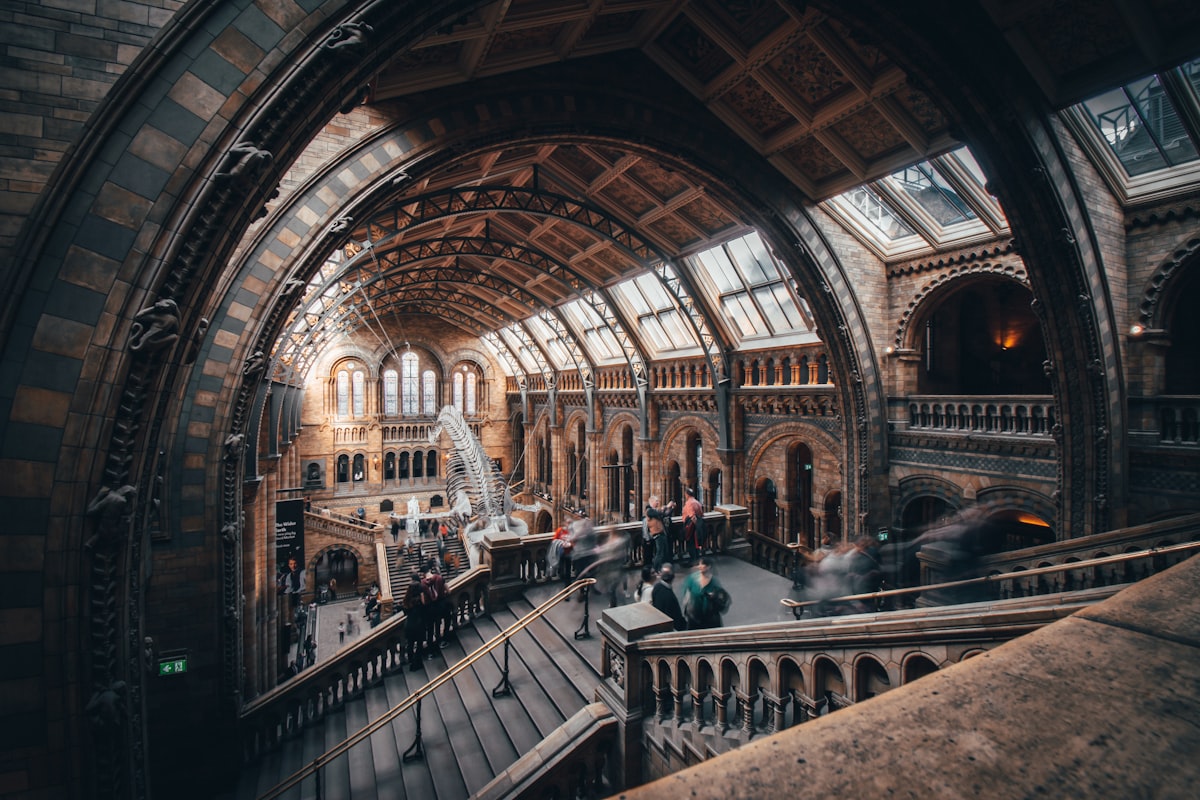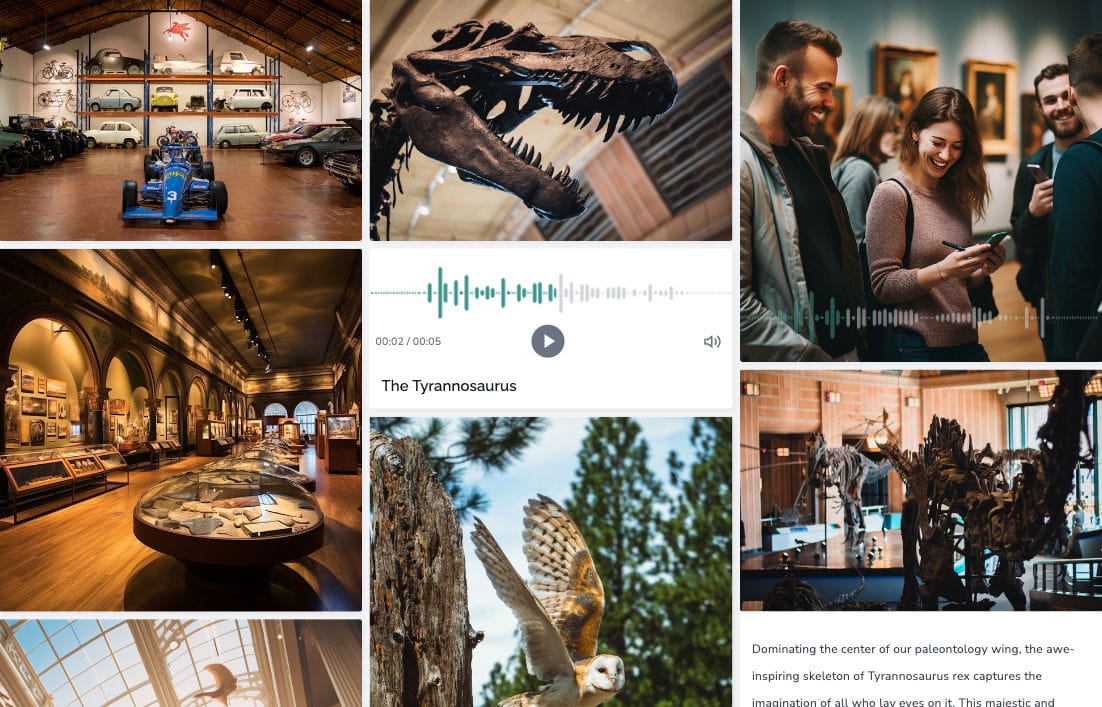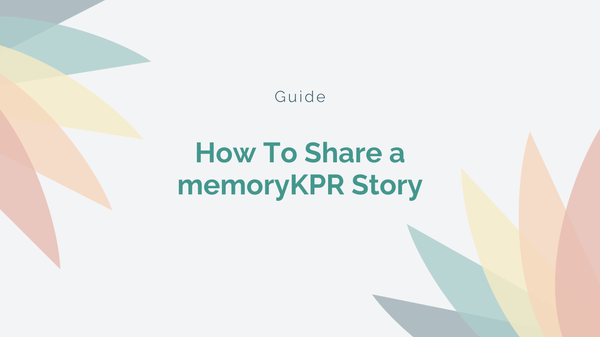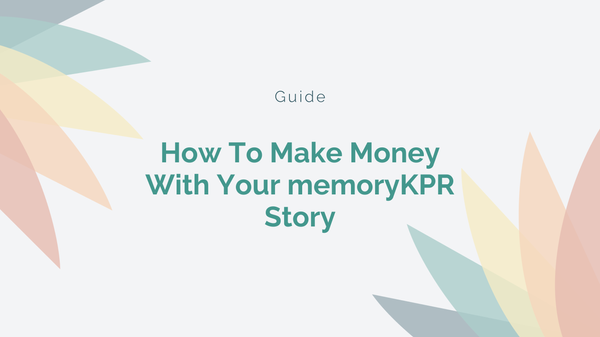The Essential Digital Marketing Checklist for Museums in 2024

Museums today face a unique set of challenges. Audiences expect more, they want to do more than observe exhibits; people want to be impacted, they want their perspectives broadened and they want to engage.
Our populations are more diverse, the education system has continued to fragment, all while funding for cultural nonprofits continues to decline. These restraints are requiring museums to find innovative ways to maximize impact on a budget. The American Alliance of Museums outlines these exact challenges in its Museums 2040 report.
I guess I don’t need to tell you this, you are living it every day, however, I think it is important that we agree up front that we, in the Museum and Heritage Industry, need to collectively learn how to do more with less, engage more visitors in unique ways, and connect with visitors in a more meaningful and profound way.
My guide outlines five focus areas to help museums navigate through their journey of modernization. You’ll find there are easy, affordable solutions that can help you provide an exceptional experience, without overwhelming your staff, visitors, and volunteers.
Bonus! There is a FREE downloadable checklist included at the bottom of this post just for you.
Marketing for Museums
#1 Digital Storytelling Integration
Have you embraced digital storytelling, without overwhelming your visitors?
Digital storytelling offers a powerful way to enhance exhibits, providing context and depth beyond what's possible on a label. But the key is to strike the right balance – you want to engage visitors, not overwhelm them with clunky technology.

The key is to keep it simple, although Museum Next calls it storyteching and dives into virtual reality and app development, most of your visitors don’t want to feel confused, ill-equipped, or overwhelmed by technology.
Instead, we suggest sticking to solutions that are familiar and accessible to all guests:
- Gallery pages: Create dedicated web pages linked to specific exhibits. Include additional images, audio clips, or short videos.
- QR codes: These unobtrusive codes are easy for visitors to scan with their smartphones, linking them directly to gallery pages for a more immersive experience.
- No-code platforms: Look for tools like memoryKPR that let you build custom web pages without any technical know-how.
Pro Tip: App fatigue is a real thing. Unless you have a high percentage of repeat visitors, consider browser-based experiences accessible via QR codes instead of a dedicated app.
#2 QR Code Engagement
Are you embracing QR codes?
Five years ago, no one knew if these things were here to stay, but now, every restaurant, store, and product seems to have them.
We encourage Museum leaders to embrace this trend and trust it, it is not going anywhere. We do recommend using a solution that allows you to have branded QR codes; branded codes are trusted codes.
To maximize QR code effectiveness, pay attention to these key details:
- Branding: Opt for a service that lets you customize your QR codes with your museum's logo and colors. This builds trust and ensures a seamless visitor experience.
- Placement: Be strategic. Place QR codes at eye level near exhibits, with clear instructions for use.
- Content: Don't make the QR code a dead-end. Ensure the linked content is well-curated and truly adds value to the exhibit.
#3 User-Friendly Mobile Experience
I spoke about it earlier, and I will again, we have so many apps, and as a collective ‘we’ I feel safe saying we are sick of them.
Unless your visitor base is over 30% repeat visitors or members, you do not need an app. Find solutions that allow you to leverage an app-like experience instead. Many solutions, such as memoryKPR will allow you to create pages, brand them, input links, and accept donations, while just scanning a QR code to access them.
If your museum warrants a mobile app, ensure it is fun, fresh, and interactive, allowing for visitor photos or stories, new content, and exciting extras that you will not find anywhere else. Incentivize your most loyal visitors with special perks or early access to new exhibits.
#4 Interactive Exhibits and Online Communities
Are you shifting your one-way conversations into two-way conversations?
Are you seeking stories from your visitors, hearing about the impacts exhibits have?
Museums are no longer just repositories of knowledge, but dynamic forums for dialogue and exchange. Here's how to cultivate that sense of participation:
- Interactive elements: Go beyond touchscreens. Include opportunities for visitor feedback, open-ended questions, and stations where people can share their own stories related to exhibits.
- Online communities: Tools like memoryKPR or Mighty Networks let you create dedicated online spaces where visitors can interact with one another, submit content, and stay connected even after they leave the museum.
- Contests and Participation: Encourage visitors to share their own photos and experiences on social media. Run contests or campaigns with themed hashtags to build excitement and community.
Using tools that can source stories back from your visitors, running contests, and doing surveys are all great ways to make a quiet observer become an active participant. As it turns out, making customers feel like part of a community, makes for more loyal visitors, than loyalty programs according to Harvard Business Review.
#5 Use Social Media to Harness User-Generated Content for Authenticity
Shifting one-way conversations to two-way, also means capturing the moments, whether it is on social media, using a platform beyond social media, or both, gathering content from visitors is the best way to attract more visitors.
People can tell if your content is stock images, AI-generated or just uninspired. Using real content, on social media, in email marketing and in mainstream marketing campaigns will help raise people's trust and interest.
Authenticity is officially the best way for museum brands, and all brands to gain trust and interest according to hearts-science marketing agencies research.
Download Our Checklist
In today's landscape, attracting new audiences while deepening relationships with current patrons is paramount for museums of any size. Embracing these strategies of meaningful modernization can transform your institution into a thriving community hub.
I have only scratched the surface today with some of the topics I see Museums and Heritage groups having the most success with.
Ready to take the next step? Use our free Checklist for Modernizing Your Museum for even more practical tips and a brainstorming worksheet to spark your own ideas.
Download FREE Museum Modernization Checklist Here
Leveraging a story platform and digital asset management solution like memoryKPR can help you make storytelling and engagement easy, fun, and impactful.
Transform Your Museum's Digital Presence with memoryKPR
Schedule your free demo today and take the first step towards a more connected museum.
Book a Demo



